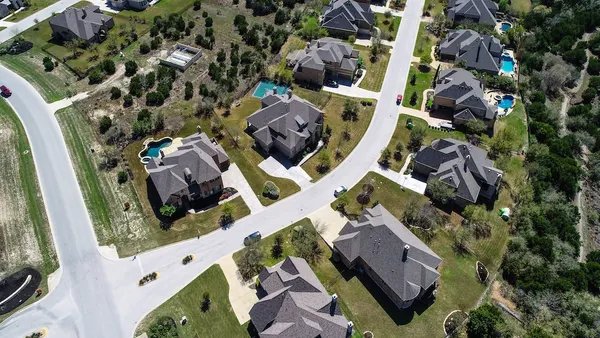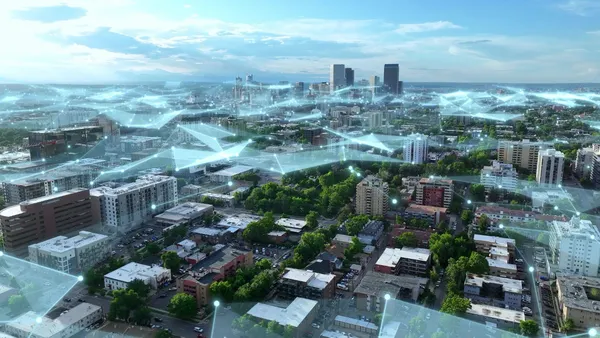Editor's Note: This piece was written by Ryan Citron, analyst at Navigant Research. The opinions represented in this piece are independent of Smart Cities Dive's views.
Ubiquitous connectivity is one of the foundational elements of the smart city. The evolution of the communications layer that connects sensors, intelligent devices and other elements of city infrastructure to users and operators is therefore one of the most important parts of the smart city market. It is also one of the most complicated.
Today’s existing networks, including RF mesh, cellular, PLC, and Wi-Fi, are evolving to meet new requirements and are being joined by new networking options including low power networks (such as LoRa, Sigfox) and emerging cellular offerings (such as 5G, NarrowBand-IoT, and LTE-Cat-M1). With the volume of connected nodes expected to grow by billions of devices over the coming decades, the pressure on network capacity will grow rapidly — along with an even greater focus on security and reliability of connections and data movements. It is fundamental that these needs be addressed as cities realize the vision of the connected smart city of the future. The goal for cities should be the development of a standardized, secure and interoperable system of communication networks.
Cities are likely to continue to need multiple providers and multiple types of connectivity for different applications. However, city leaders implementing a comprehensive smart city vision are looking to develop more coordinated strategies for their future communications needs and are looking at the way different solutions will come together in the connected city of the future. This includes reviewing their fiber infrastructure, the role of multi-application networks and platforms and the potential of emerging technologies such as 5G networks.
The widespread need among cities for connectivity is creating a growing market opportunity. The global market for smart city communication networks is expected to grow from $5.8 billion in 2018 to $13.4 billion in 2027, representing a compound annual growth rate of 9.8%.
Communications infrastructure: Realizing the value of city assets
Communications equipment, such as cellular network technology, is becoming increasingly integrated with city infrastructure. In particular, street lights have become valuable city assets that are supporting the deployment of cellular networks and future 5G networks. For example, in September 2017, Philips announced a partnership with wireless provider American Tower Company to develop a new smart street pole that comes equipped with cellular equipment for 4G and 5G and can colocate multiple wireless carriers in a single structure.
One of the key issues for city planners and officials will be working with other levels of government to determine the rules and regulations for how future networks, particularly 5G, will be deployed in the city environment. While 5G networks will be able to handle far more traffic at higher speeds compared to LTE, the downside of 5G networks is that the cellular signals do not travel far and are easily blocked by objects. To prevent signals from being dropped, 5G networks require many more base stations to relay the signals than the current 4G networks. Small-cell base stations can solve that problem by using small, low power nodes that can be attached to existing infrastructure such as street lights and utility poles.
Cities are already working with communication service providers to deploy small cells to improve coverage. In Scotland, the city of Aberdeen has worked with the Wireless Infrastructure Group and O2 to deploy Europe’s first large-scale, multi-operator, small-cell mobile network. The new wireless infrastructure uses a network of small cells attached to lamp poles and traffic lights in the city center. In April 2017, the City of London Corporation — the capital’s financial center — announced the deployment of around 400 small cells across street lights and other assets as part of a program to extend coverage and to prepare for 5G.
However, significant disagreements have also flared up between cities, states, citizens, and carriers regarding the rules of installing of small cells. Ownership and charging fee structures, zoning, and citizen concerns around cell site radiation and the physical appearance of new equipment are all becoming key issues. Legislation is being introduced in a number of U.S. state-level jurisdictions to prevent local authorities from instituting overly onerous fees or procedures on carriers, leading to quicker and larger deployments of economically beneficial 5G networks. City officials and citizen groups critical of these bills view them as enabling significant (and undesired) physical changes to the city landscape, while eliminating the rights of cities to ensure the small-cell deployments are approved by local communities.
Issues around the deployment of small cells on city infrastructure will likely continue to be controversial in some cities, particularly in the U.S. Many cities are keen to be at the forefront of 5G adoption and are working closely with telecom providers to deploy the necessary infrastructure, but others are still weighing how they can obtain the most benefits from city assets and from any necessary changes to the city landscape.
Recommendations for cities
Cities should be planning for their deployment of IoT solutions through coordinated strategies, and understand the need to support future widescale automation and intelligent operations. When choosing network solutions, cities should consider several factors, including: price, security, reliability, performance, interoperability and scalability. A city’s network choices should be aligned with its specific needs, policy objectives and the long-term requirements for connected infrastructure. This includes looking at its fiber infrastructure, the use of city assets for small-cell deployment, and the provision of connectivity for all communities.
Communication networks are not just enablers for smart city applications, they are also fundamental to the future city economy. For the efficient deployment and full benefits of future networks such as 5G to be realized, cities may need to overhaul current regulations (e.g., zoning processes), look at how to maximize city assets (including street lights and city-owned fiber), and work with partners to develop business models that can accelerate the deployment of these new technologies.

















